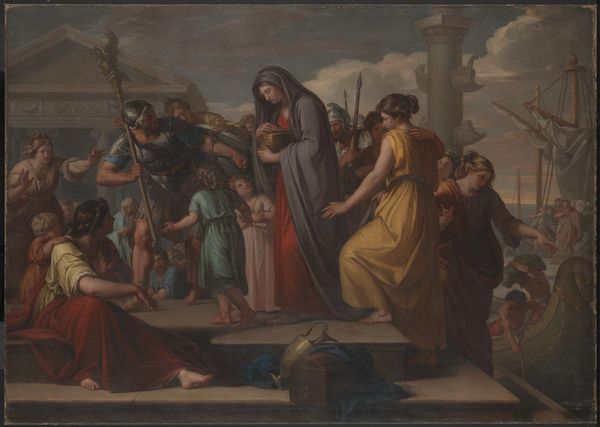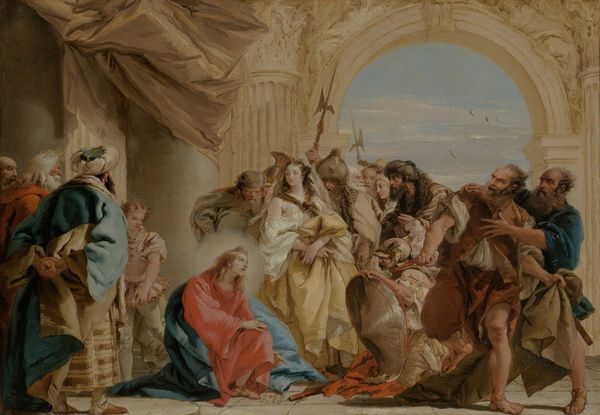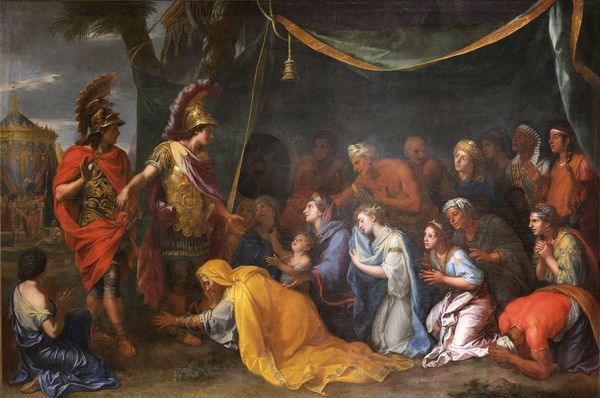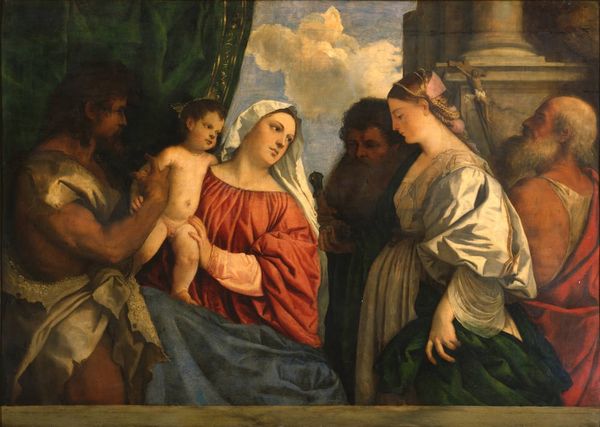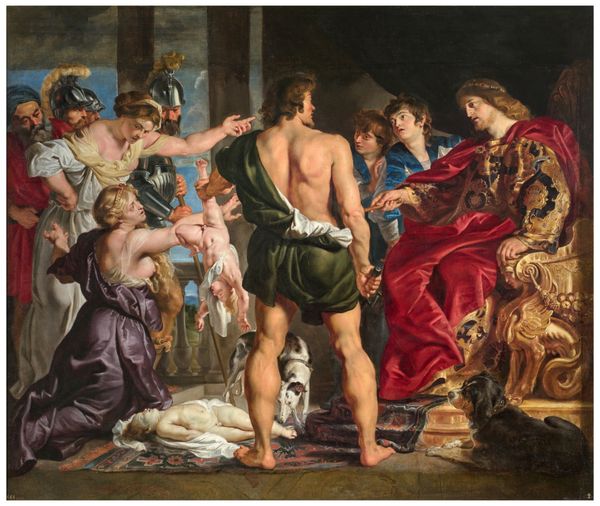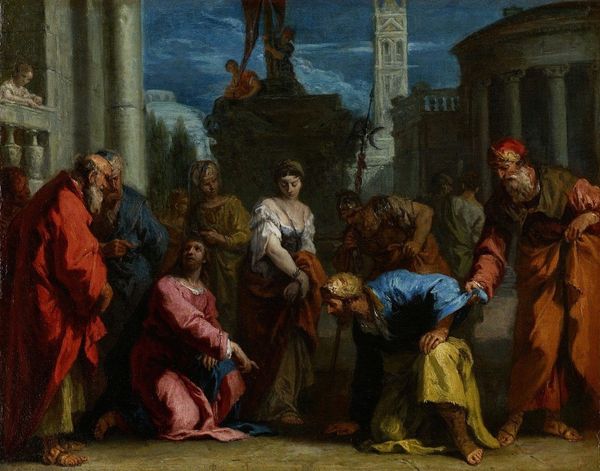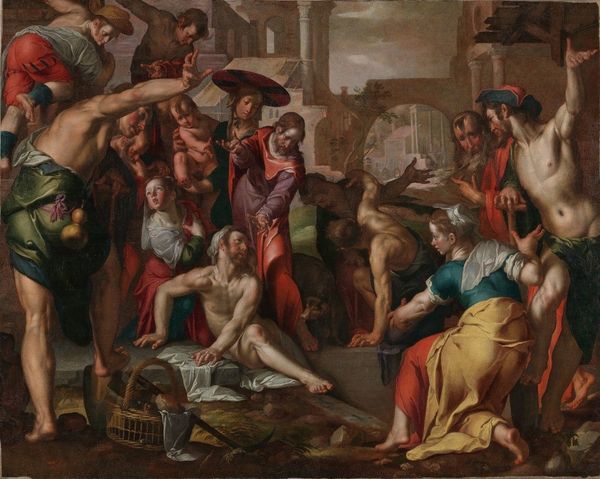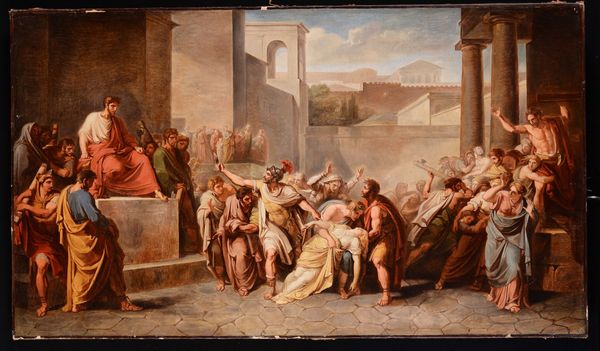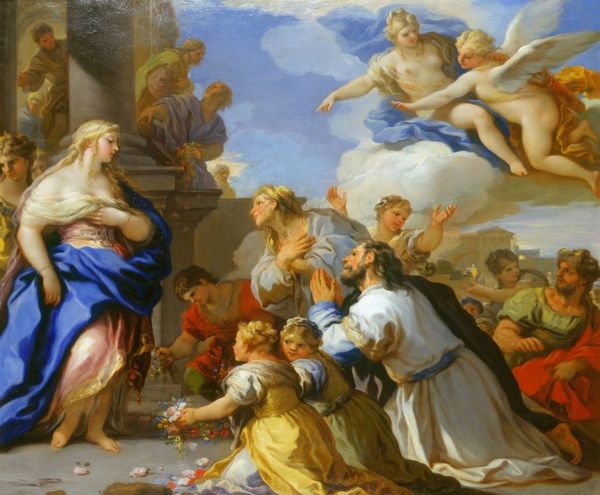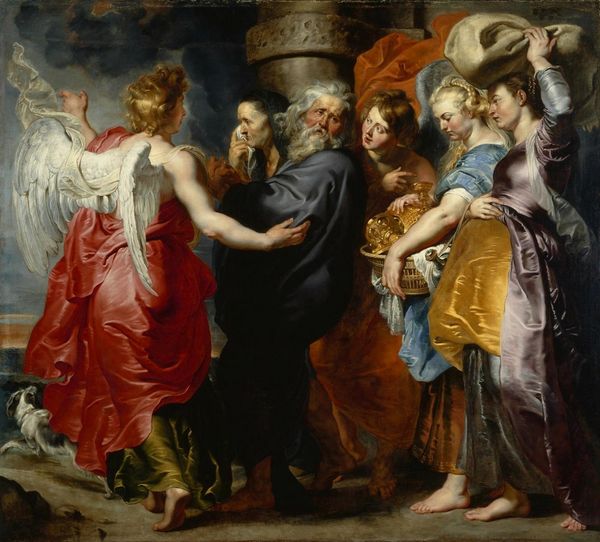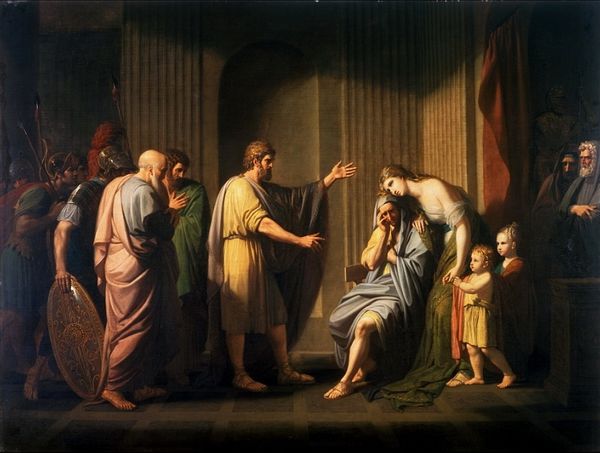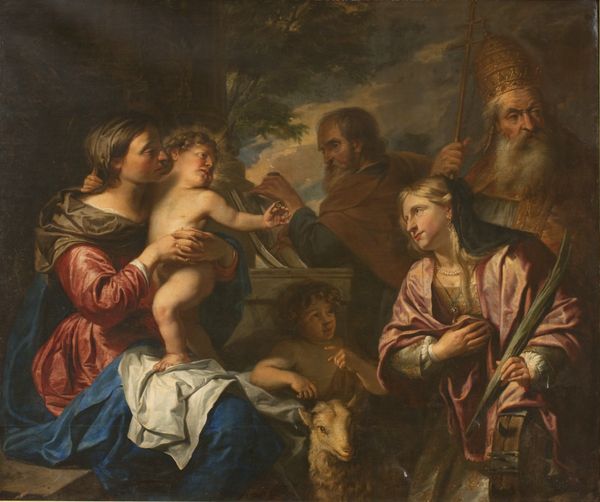
painting, oil-paint
#
narrative-art
#
baroque
#
painting
#
oil-paint
#
figuration
#
oil painting
#
history-painting
#
italian-renaissance
Dimensions: 155 x 355 cm
Copyright: Public domain
Editor: This is Luca Giordano’s *Marriage of the Virgin*, an oil painting from 1688. It feels almost staged, like everyone has their designated role in the scene. What cultural symbols stand out to you? Curator: Note the flowering rod held by Joseph. Legend tells that it miraculously bloomed, signifying divine approval for his marriage to Mary. It’s not merely a pretty detail; it speaks to a deep well of cultural memory, tying into ideas of legitimacy and divine will, themes central to the Counter-Reformation. Consider the cherubs overhead—what do they evoke for you? Editor: Innocence? Divine blessing? Curator: Exactly. These recurring motifs aren’t arbitrary, they are designed to resonate, creating a layered narrative understandable even to a largely illiterate population at the time. How do the color choices add to this conversation? Editor: Mary is draped in blue, which I’ve learned signifies purity and divinity. It sets her apart. Curator: Precisely. The calculated deployment of iconographic language – from color, to gesture, to attribute – reinforces the painting’s core message of divine ordination. Are there any elements of personal expression for the author, in this pre-modern work? Editor: It almost feels like a stage, and all characters have the clothes, props and the pose they should have in this divine play, in perfect harmony. Curator: It is important to see those paintings within the political context, where artists, as communicators of all sort, are actively engaged to communicate core religious, moral and ethical principles. Thanks for joining me on this journey through imagery. Editor: This really makes me look at these historical artworks from a very new and rich point of view, considering all different aspects and the symbols implied in it.
Comments
No comments
Be the first to comment and join the conversation on the ultimate creative platform.
